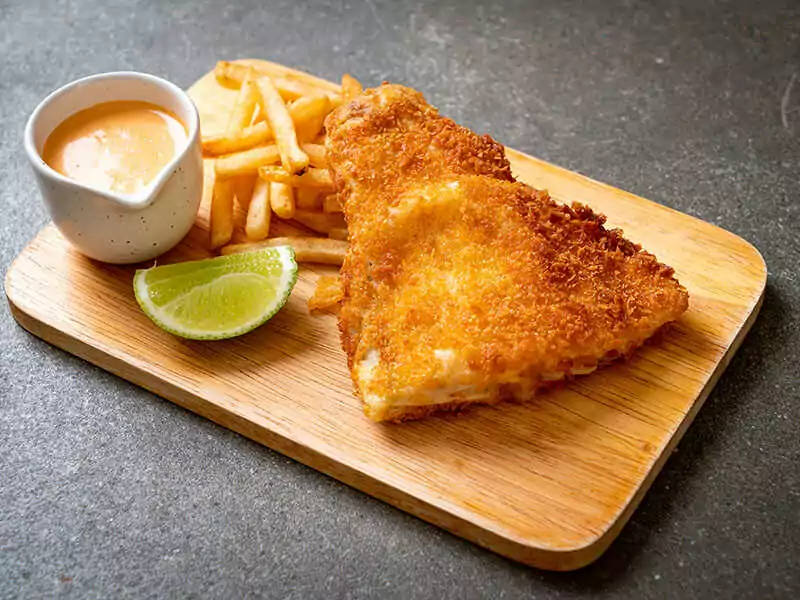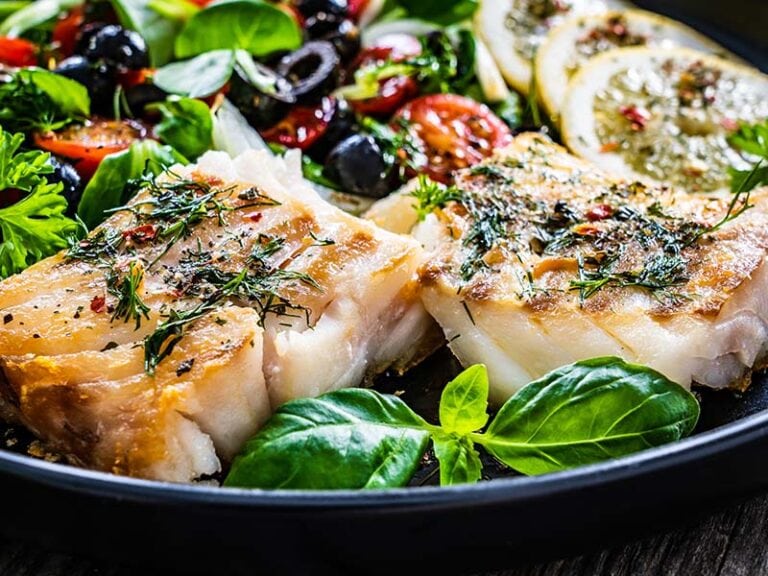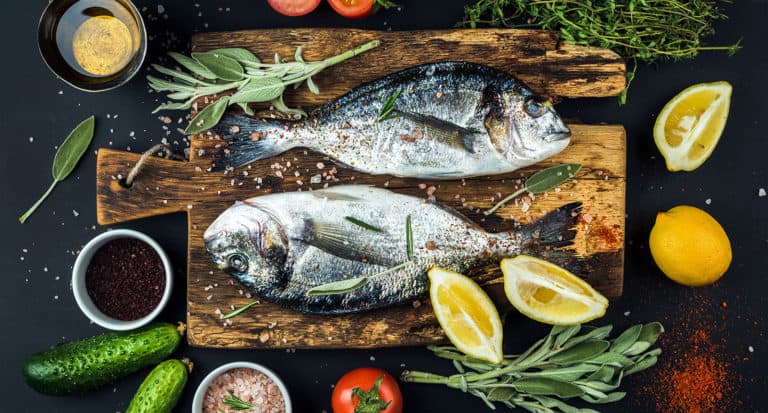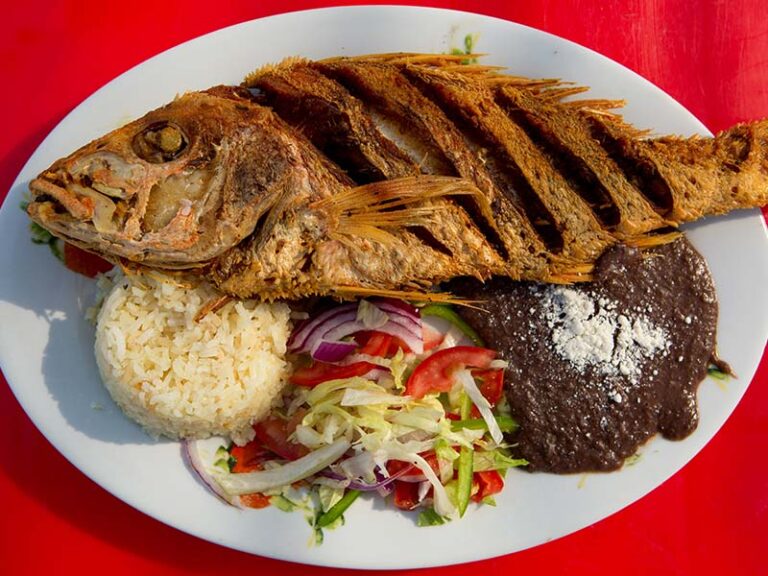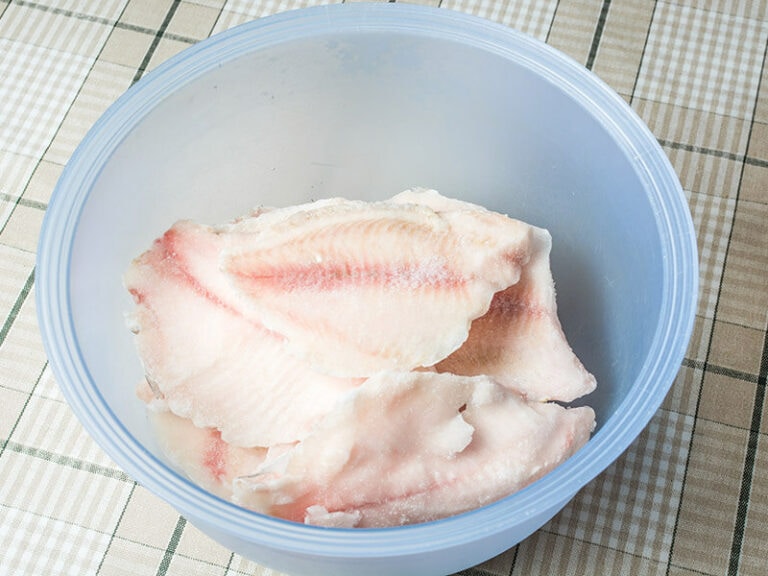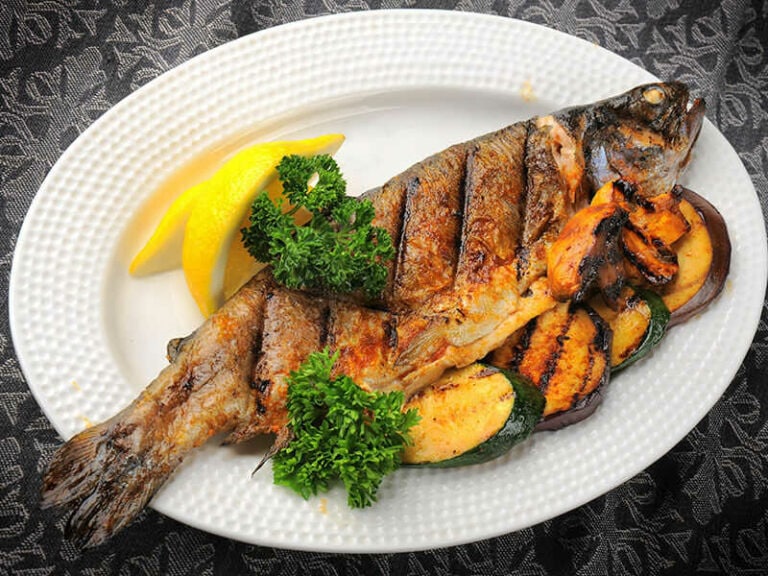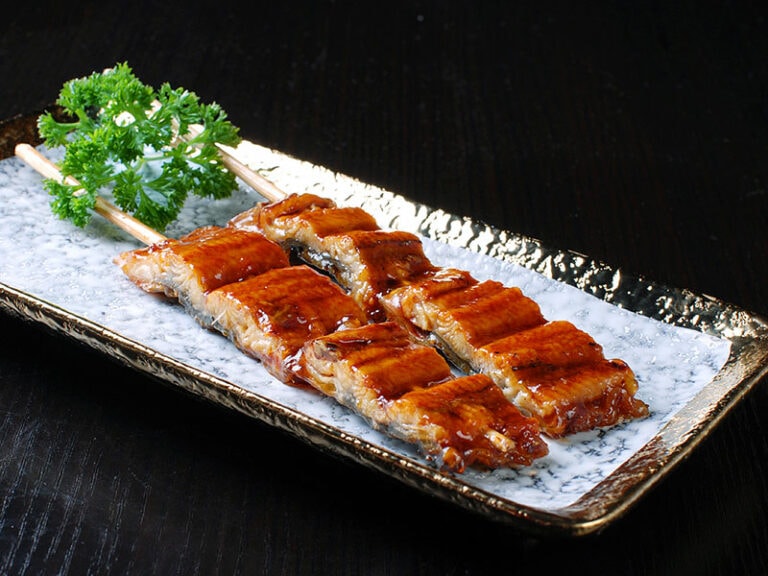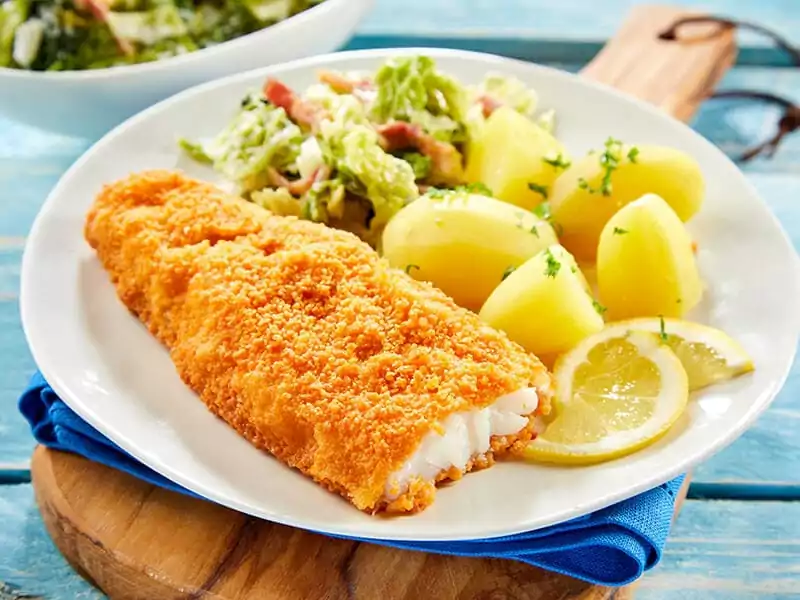
High temperatures, hot oil, and a shortage of time can make it hard to know how long it should take to fry fish in a deep fryer. You might accidentally overcook it and burn the whole batch or undercook it and end up with a soggy mess.
Fortunately, deep-frying fish can be quite simple once you have mastered the techniques. Learn all about the right ways to do it with all the information from this article. It includes everything about deep-frying fish, from the temperatures, the amount of time to useful tricks for a better dish.
What’s more, among many ways to reheat fried fish, a deep fryer is also an excellent appliance to keep your cooked dish as good as the freshly made one. So keep reading to explore.
The Right Time And Temperatures To Fry Your Fish In The Deep Fryer
Generally speaking, a batch of fish should take about 3 – 6 minutes to deep-fry. However, it also depends on the oil temperatures and parts of the fish you are cooking. The temperatures should range from 350F – 375F for the fish to deep-fry quickly and evenly.
Two Common Ways To Deep-Fry Fish
Now that you’ve mastered the skills required to smoke fish, you want to move on to deep-fried fish. The best way to do so is undoubtedly a deep fryer. It’s designed specifically for this cooking method, so you can make the most crunchy and golden fish pieces without too much work.
You can also make deep-fried fish in a deep saucepan on a stovetop as an alternative to the deep fryer. This requires more attention and carefulness to make sure the fish is cooked right. You will also need to check the temperature manually by using a candy thermometer.
Moreover, in case you can’t decide between skillets and frying pans for deep frying fishes, then don’t, because both of them are not too ideal replacements for deep fryers due to their short edges.
Instead, you should spend more of your efforts on preparing the companion foods to serve with fried fish. Some viable options include lemon-roasted potatoes, baked beans, onion rings, or the classic French fries.
The Best Fish For Deep-Frying
There’s nothing quite like a batch of crispy, golden, and steaming hot deep-fried fish to snack on. Choosing the correct type of fish can help you achieve this easily. The general standard is it needs to be tender but consistent, a bit oily with mild-tasting flavors.
Cod Fish
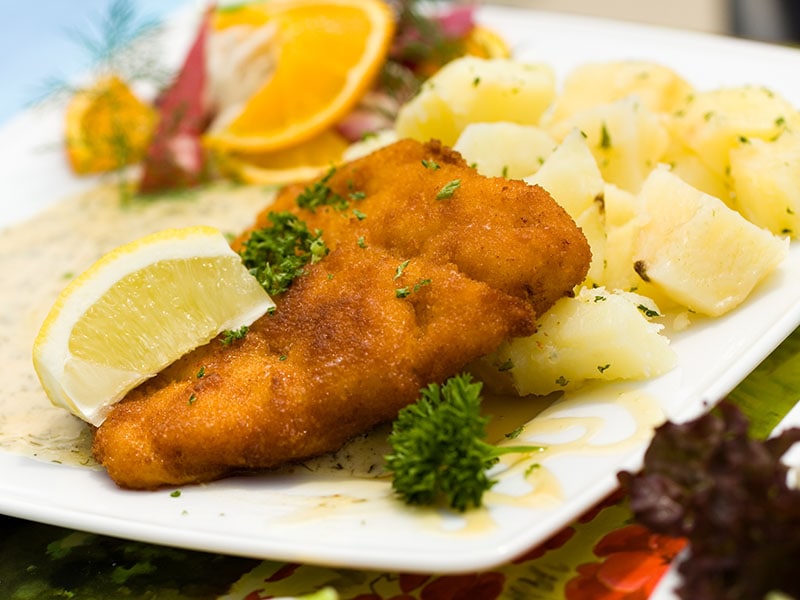
Codfish is possibly the most popular choice for deep frying. Its meat is extremely tender, which contrasts very well with the crunchy shell. Its mild and milky flavor makes it easy to pair with various sauces and toppings.
And if possible, try to prepare some side dishes to pair with your cod fish for a fulfilling dinner.
Haddock
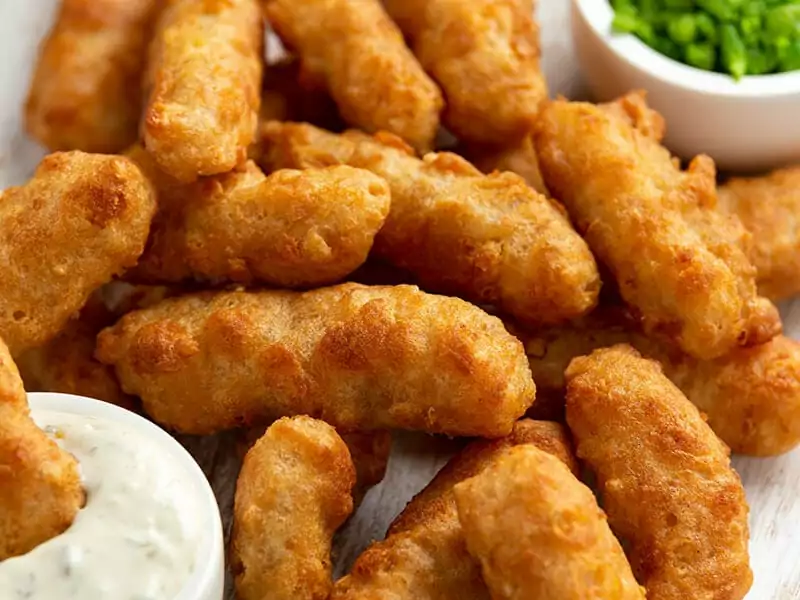
Haddock is a second favorite choice when it comes to making fish and chips. It’s slightly sweeter than cod and a lot more tender in texture. The soft and mild taste makes it a perfect pair with anything buttery or savory.
Tilapia
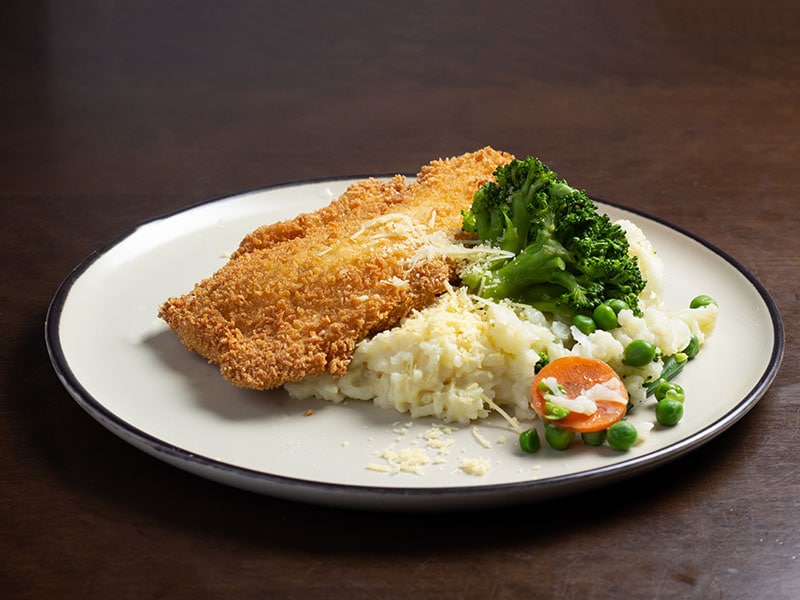
Tilapia fillets are used a lot when it comes to deep-frying, so it gives you a much larger and filling piece. It’s consistent enough in texture to withstand the heat but still stays soft and flaky inside after the process.
Halibut

Halibut is a bit more expensive than the fish mentioned above, but it’s also a high-quality source of great nutrients like protein and omega-3 fatty acids. It’s thicker and firmer than codfish in texture with a mildly sweet taste. This means it can pair well with other bold and intense flavors.
Pollock
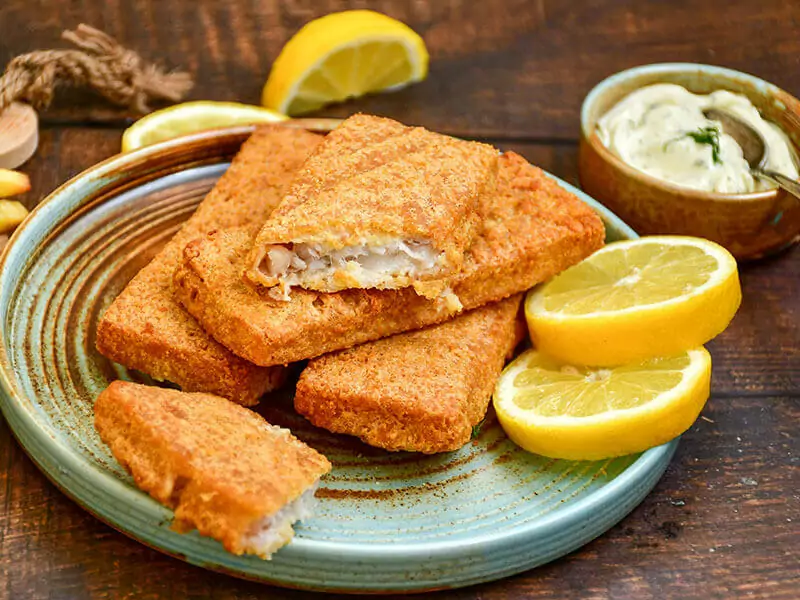
Pollock is a very commonly-used fish in many restaurants, fast food chains, and households. It comes from the cod family, but it’s much more flavorful and richer than codfish because of its high oil content.
How Long Does It Take To Fry Fish In A Deep Fryer?
There are multiple factors that can influence the length of time you should deep-fry your fish, such as the oil temperature, the parts of the fish, as well as the number of batches you are cooking.
Deep-Fry Fish At The Right Temperature
The recommended oil temperature range for cooking fish in a deep fryer is between 350F and 375F. The smaller the piece, the higher the temperature. It’s important to adjust it accordingly because if it’s too low, your fish will be greasy while leaving it too high will overcook it easily.
If you’re using an electric fryer, you can easily set the temperature and wait for it to pre-heat. However, if you’re deep-frying on a stovetop, you can learn the temperature of the cooking oil by using a long-stem fry thermometer.
Time Span For Deep-Frying Fish
As mentioned above, the ideal temperature range for deep-frying fish is between 350F and 375F. Cooking it in small batches for about 3 – 6 minutes will give the best result. However, the time length can vary depending on the parts as well as the thickness of the fish you are cooking.
Small battered parts or nuggets should take from 3 – 5 minutes at 365F. Bigger pieces like whole fish or .75 inch fillets can be cooked at 350F with the same time length. 1 inch steaks however, will take a little longer to cook, ranging from 4 – 6 minutes at 350F.
| Types | Oil Temperature | Time |
| Battered Fish | 365F | 3 – 5 minutes |
| Catfish Nuggets | 365F | 3 – 5 minutes |
| Whole Fish | 350F | 3 – 5 minutes |
| Fillets | 350F | 3 – 5 minutes |
| Steaks | 350F | 4 – 6 minutes |
How To Know When Fish Is Done Cooking
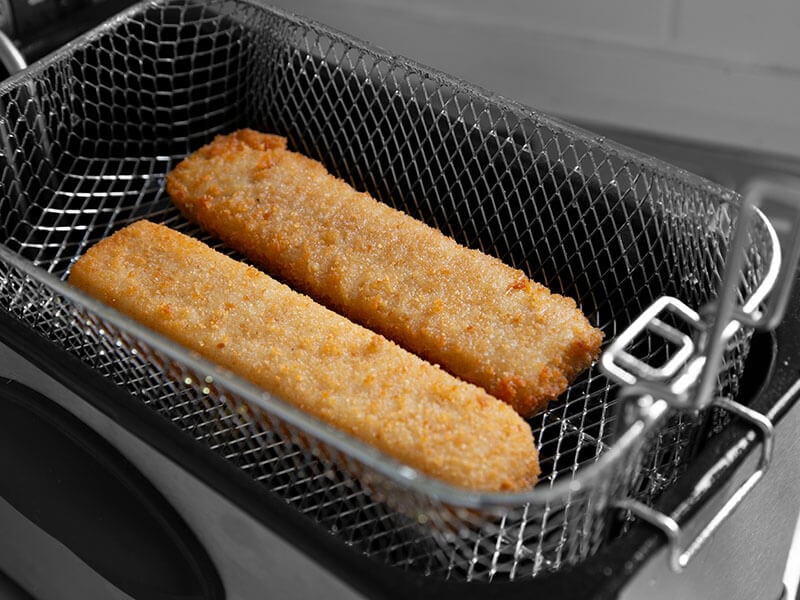
Fish tends to cook pretty quickly, especially when it is deep-fried in high-temperature oil. With such a short amount of time, it’s essential to know all the signs of when it’s done, so you don’t accidentally burn it.
The General Signs Of When Fish Is Done
There are three main things to look for when examining the doneness of fish:
- Color: Most fish flesh turns from translucent to opaque when it is done.
- Texture: Cooked fish is very consistent but also separates easily. It should slightly flake but also shows firmness when you cut a knife into the center.
- Internal Temperature: Cooked fish’s internal temperature should typically be 140F – 145F(1). You can measure it by sticking a meat thermometer in the thickest part of the fish.
- This is also the most reliable method to check for fish doneness. And use a well-made wireless meat thermometer for precise checking.
- The Cake Tester Method: A simple trick for those who don’t have a thermometer is to stick a cake tester into the thickest part of the fish for 3 seconds, then touch it to your bottom lips. If it is warm that means the fish is thoroughly cooked.
Watch this video to know more:
Ways To Tell If Deep-Fried Fish Is Done
Most of the time, if your fish is average or small in size, it should float to the top when it is done. Bigger and heavier slices, however, may not always float. You can keep cooking until the batter has turned golden or golden brown, then remove it, and check for the color, textures, and temperature.
Deep-Fry Your Fish To Perfection With These Simple Tips
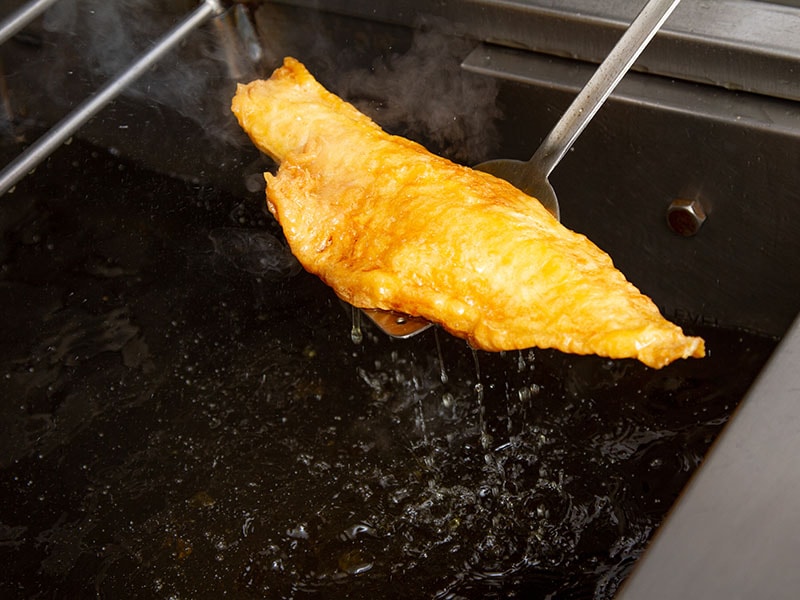
Deep-frying fish is relatively simple and quick. It doesn’t require much skill, just a little bit of practice, and you can make yourself some nice crispy fish snacks in no time. However, knowing these helpful tips and tricks will give you a much easier process and better outcome.
Use The Appropriate Equipment
The ideal equipment is obviously a deep fryer because it has a consistent temperature, the right tool to hold the food, and the ability to preserve the leftover oil. However, if you want to use other utensils, choose a heavy-bottomed pot with high sides that can retain temperatures.
Get The Perfect Crisp With The Right Batter
The batter should be fresh and thin to make a crispy outer layer. That means you shouldn’t use any batter that has been out for more than four hours. Keep the batter light and airy by using baking powder and a whisk instead of a spoon to blend the ingredients together.
Choose The Right Kind Of Oil
Vegetable oil, peanut oil, or canola oil are the best options because of their high smoke point and neutral flavor. Also, there are many other options in place of vegetable oil for you to choose from.
Overall, they can prevent the food from burning and having a bitter taste. They are also very cost-effective because you can reuse them multiple times.
Everything you need to know about choosing oil for deep-frying. You should see the video below:
Keep The Fish Dry
Always make sure your fish is dry before frying it or adding the batter. The extra moisture can cause the oil to splatter, so remember to pat your fish dry with some paper towel beforehand.
Cook At High Temperatures
Low temperatures will cause the food to soak up the oil and become too greasy. Make sure you cook at high temperatures so the batter can crisp immediately and create a barrier between the oil and the food.
Cook In Small Amounts
Don’t get lazy or impatient and fry everything all at once. Small batches are easier to control and work with. Bigger batches can lower the oil temperature and cook the whole bunch improperly. Start with only a few pieces so you can make sure all the pieces are fried to perfection.
Use A Cooling Rack To Dry The Fish
Contrary to popular belief, you shouldn’t put the fish on paper towels to drain the oil because it will cause steam to form and turn the coating soggy quickly. Use a dry metal or cooling rack instead to keep it nice and crispy.
Keep Yourself Safe
When working with high temperatures, you need to pay attention at all times. Always make sure the temperatures are between 350F and 375F. If you start to see smoke, turn off the heat to cool the fryer down. Don’t throw water if you see fire and use an extinguisher or a damp towel instead.
A full tutorial on how to deep fry fish and tricks to make it taste good. Let’s watch this video:
Simple And Delicious Deep Fried Fish Recipe To Try
Now that you’ve known everything about frying fish in a deep fryer, it’s time to get to the kitchen and cook up a delicious meal. To help you with that, here’s a simple recipe that everyone can follow.
Caption: Let’s treat your family to some delicious deep-fried fish!
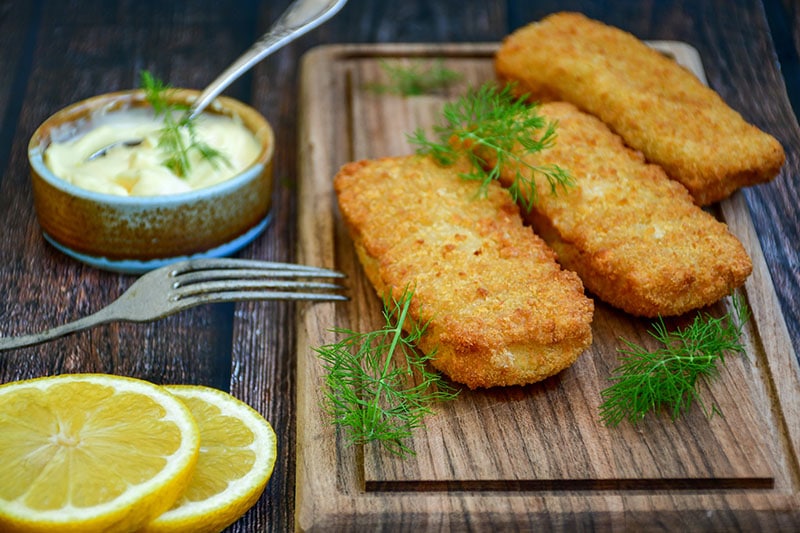
Ingredients
You can prepare about 4 servings with 1 ½ pound of fish fillets. As for the frying oil, I’d recommend using vegetable oil or canola oil.
- 1 ½ pound cod filet
- ½ cup all-purpose flour
- 2 tablespoons cold water
- 2 eggs
- ¼ teaspoon paprika
- ¼ teaspoon cayenne pepper
- ½ teaspoon mustard powder
- 2 cups breadcrumbs
- Salt and pepper to taste
- Vegetable oil
Recipes
It’s time to deep fry the fish! The process is quite simple and includes only two main steps.
Step 1: Prepare The Fish Filets
Cut the fish into 4 portions and season them with salt and pepper. Pour flour into one bowl and mix eggs and water in another bowl. Put breadcrumbs and other spices in a third bowl and mix well. Coat the fillets in flour, then the egg mixture, and finally, the breadcrumbs.
Step 2: Deep Fry The Fish
Pour about 2 inches of vegetable oil into a deep fryer and heat it to 350 degrees F. When heated to the desired temperature, deep fry the fish in batches for about 4 to 5 minutes, flipping once. Drain the excess oil with paper towels.
FAQs
There is always a lot to talk about when it comes to cooking. Even though deep-frying fish seems straightforward, I know you might still have some questions regarding various issues. Read the following questions to see if yours are included.
The Secret To Deep-Frying Fish Like A Pro
Deep-frying has become a common method to cook fish in recent years because of how quick and easy it is. You can make gorgeous and mouth-watering pieces of crunchy fish in just less than ten minutes without too much of a fuss.
However, like everything else, practice makes perfect. The more fish you deep-fry, the more you will learn about the proper techniques as well as the time length for cooking it. Don’t be too scared and give it as much try as you want. Let me know how everything turned out.
Nutrition Facts
4 servings per container
- Amount Per ServingCalories441
- % Daily Value *
- Total Fat
6.9g
10%
- Saturated Fat 1.4g 5%
- Cholesterol 143mg 48%
- Sodium 548mg 23%
- Potassium 161mg 5%
- Total Carbohydrate
51.3g
17%
- Dietary Fiber 3g 12%
- Sugars 3.6g
- Protein 42.1g 84%
- Calcium 116%
- Iron 4%
- Vitamin D 8%
* The % Daily Value tells you how much a nutrient in a serving of food contributes to a daily diet. 2,000 calories a day is used for general nutrition advice.
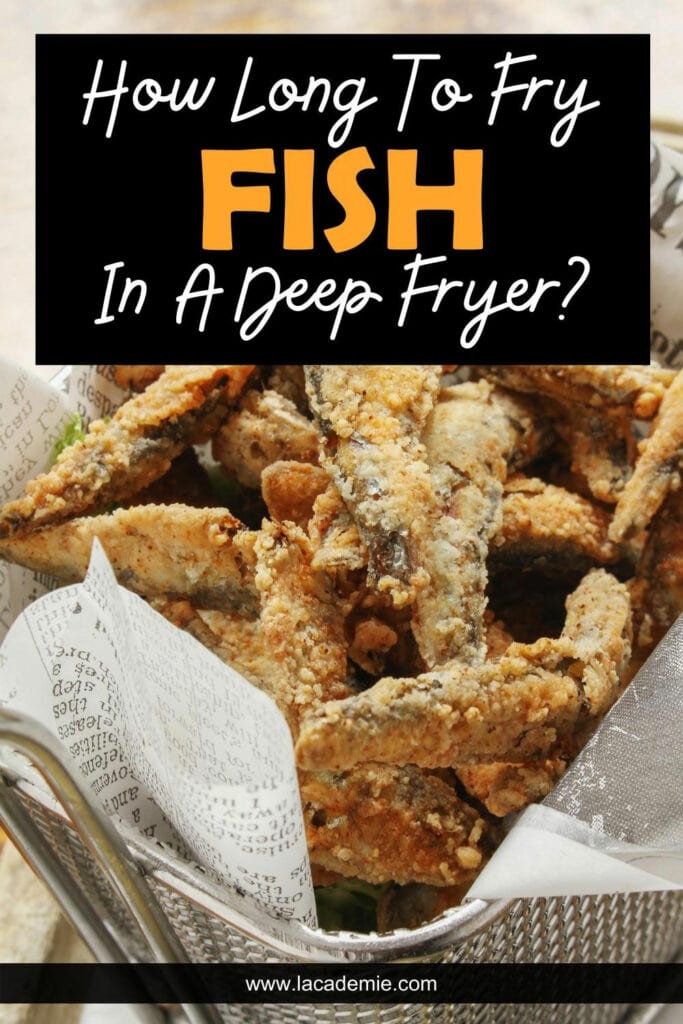
Reference
- U.S. DEPARTMENT OF AGRICULTURE 2020. Safe Minimum Internal Temperature Chart. [online] Available at: <https://www.fsis.usda.gov/food-safety/safe-food-handling-and-preparation/food-safety-basics/safe-temperature-chart>.

